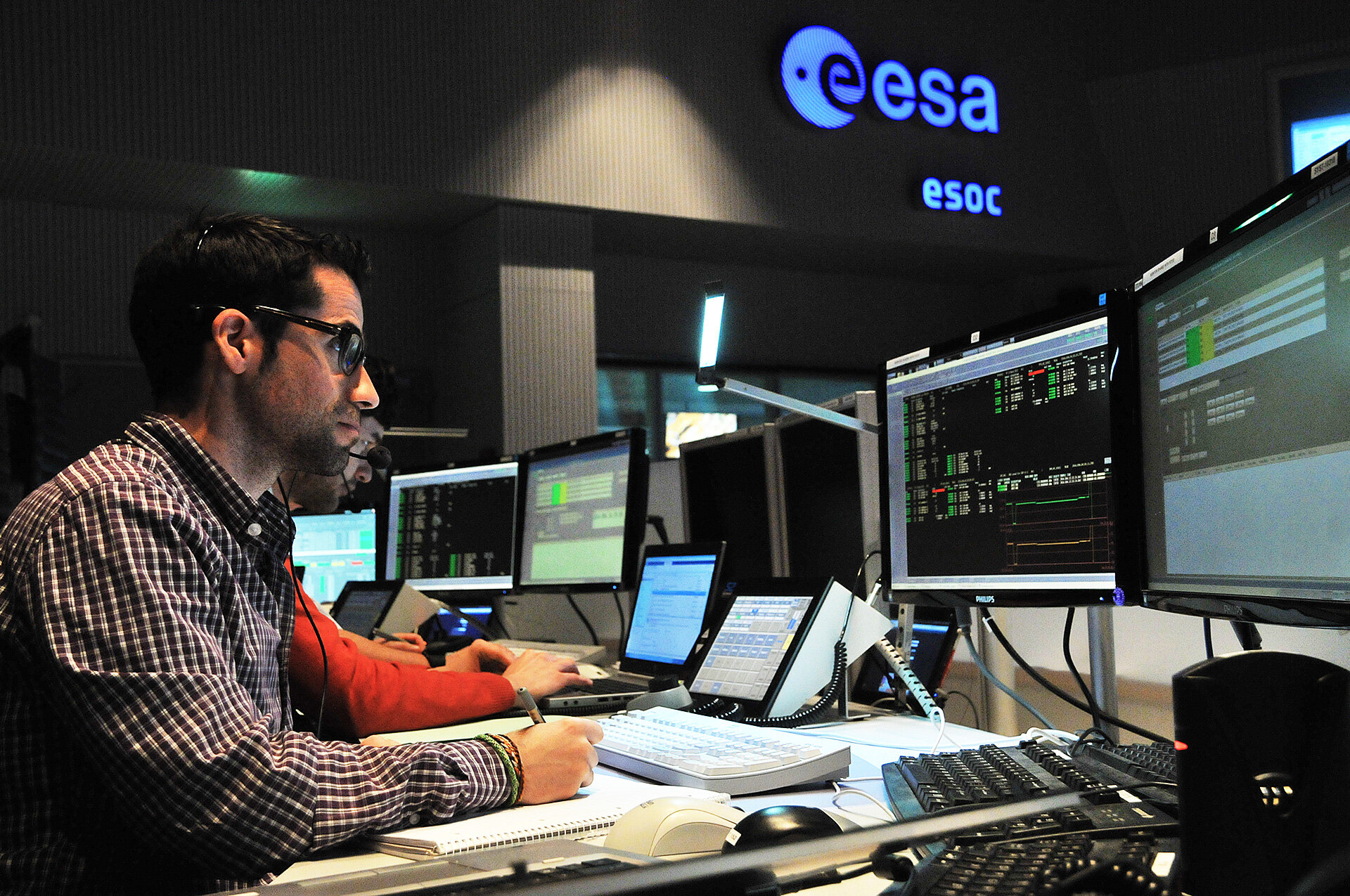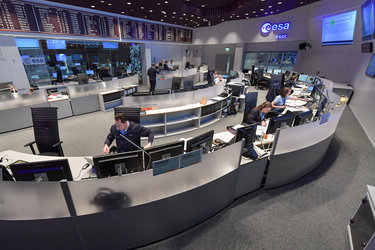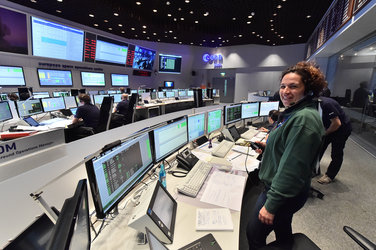

Ready for Sentinel-1
Thank you for liking
You have already liked this page, you can only like it once!
In the final weeks leading to the Sentinel-1A launch, set for 3 April 2014, the mission control teams at ESA’s operations centre in Darmstadt, Germany have been training intensively.
The simulation sessions – often running through a full 12-hour shift – are conducted ‘on console’ in the Main Control Room, and pace the teams through every step of the satellite’s launch and entry into orbit.
Trainers inject a carefully staged series of faults, errors and failures into the satellite or into the software and systems used to fly it. Meanwhile, the mission controllers sitting on console must recognise and assess the problem and apply the correct contingency procedure.
In this image, Juan Vizcaya, one of two Sentinel-1A Ground Operation Managers, watches intently for any problems with the ground tracking stations or network systems used to communicate with Sentinel.
-
CREDIT
ESA -
LICENCE
ESA Standard Licence

ESOC Mission control room

Mission control room

Sentinel-2A team

Training to succeed

